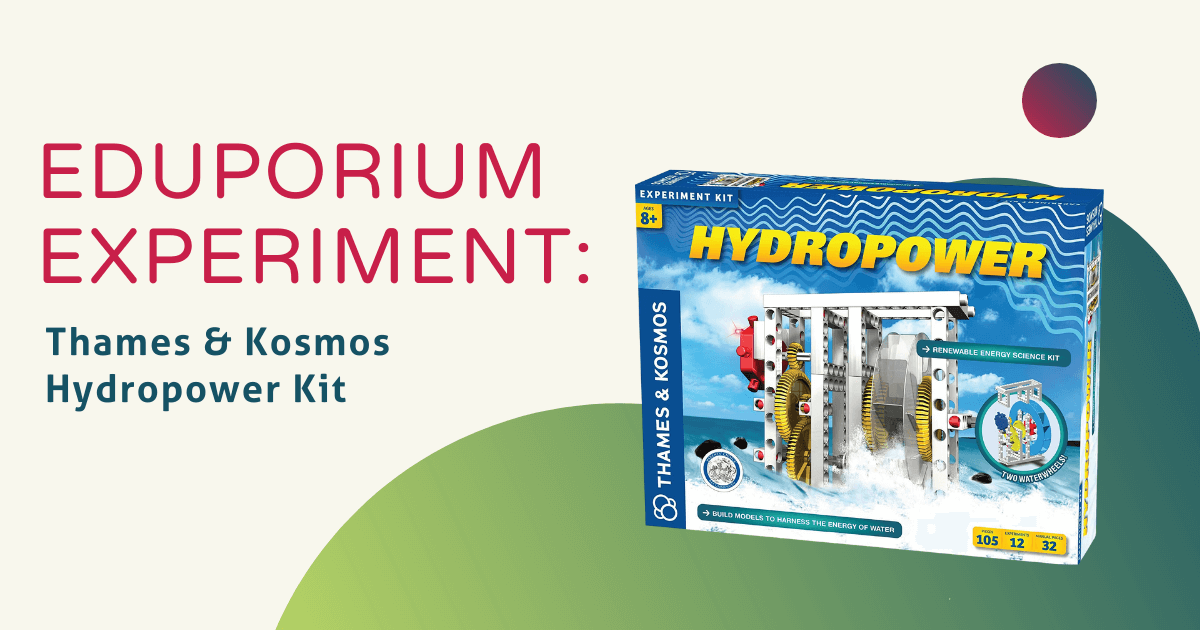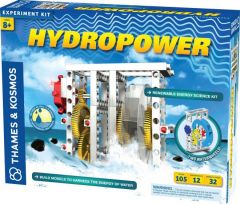There are interactive science kits that boost hands-on education. And, then there are kits designed to totally invigorate active learning by providing students with an accessible, fun, and enrichment-filled learning adventure. The Hydropower Kit from Thames & Kosmos falls under the latter. Using this kit, educators have the potential to transform their classrooms into experimental labs and give their students the chance to investigate, innovate, and excel.
The idea behind the Hydropower Kit, like with all Thames & Kosmos kits, is that STEM learning is best when it’s hands-on and active. It takes a longtime scientific concept and breaks it down so that kids can see it in action and conceptualize its importance. Plus, it’s incredibly easy for kids to do so as the Hydropower Kit is designed for students as young as 8 years old to put their STEM skills to the test and use versatile components to construct anything from a hydroelectric power station to an LED with flowing electricity.
This kit is also a wonderful way to introduce kids to a science concept they may not be completely familiar with. I found this out for myself as I gave one of the 12 included experiments a try in our office this week. The first thing I noticed is that before the steps to each project comes a list of the components students will need. Since the Hydropower Kit contains around 100 pieces, this is a very helpful system. Each piece has a number that correlates with its picture, so students know exactly what they need to identify and include when planning out their project.
I decided to try Project No. 2, which instructs kids to build a sawmill that can operate on hydropower. It looked a bit intimidating in the guidebook, but, once I broke it down into simple steps, it became a lot less daunting. A good approach for kids getting into the basics of engineering is to not try to do too much too fast. Just take the building process one piece at a time and it will become much more manageable. Essentially, this particular project is designed to get kids creating with their hands and investigating the steps it takes to harness the energy that moving water provides and use it to complete different kinds of work.
It does take a bit of attention to detail to construct some of the projects in this kit as some of the pieces are small and some of the projects get to be a bit complex—but nothing smart kids can’t handle! This particular project was a bit tough, but the end result was a functioning saw mill that runs off hydropower! It’s pretty incredible to think about water being the driving force that runs something as powerful as a saw, but that’s just what this Thames & Kosmos kit is designed to do: get kids thinking about new and innovative ways to accomplish everyday tasks more efficiently using different forms of technology.
Through eye-opening experiments, kids are able to see how the power of water is used to maximize output in structures like hydroelectric dams and tidal power plants. Like the project I perused, each one in the 32-page guidebook is designed to provide an illustrated introduction to extracting energy from moving water through the purposeful construction of models that can be used to perform experiments.
All in all, the Hydropower Kit is a fantastic ally in teaching kids about using water as a resource to maximize industrial output. It provides opportunities for creativity, design thinking, and collaborative engineering to expose kids to real-world science concepts and is a great way to promote one-step-ahead learning! To add the Hydropower Kit to your classroom or makerspace, click below to get started!
If you have an idea for a product you’d like to see featured on the Eduporium Experiment, let us know by sending us a message on Facebook or Twitter. And, look out for next week’s edition of the Eduporium Experiment, featuring the pi-top, coming at you next Wednesday!





1 Comment